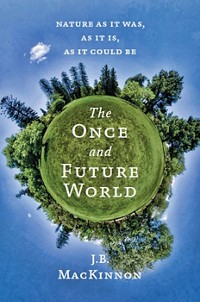Advertisement
Grab your lab coat. Let's get started
Welcome!
Welcome!
Create an account below to get 6 C&EN articles per month, receive newsletters and more - all free.
It seems this is your first time logging in online. Please enter the following information to continue.
As an ACS member you automatically get access to this site. All we need is few more details to create your reading experience.
Not you? Sign in with a different account.
Not you? Sign in with a different account.
ERROR 1
ERROR 1
ERROR 2
ERROR 2
ERROR 2
ERROR 2
ERROR 2
Password and Confirm password must match.
If you have an ACS member number, please enter it here so we can link this account to your membership. (optional)
ERROR 2
ACS values your privacy. By submitting your information, you are gaining access to C&EN and subscribing to our weekly newsletter. We use the information you provide to make your reading experience better, and we will never sell your data to third party members.
Environment
When Is Enough, Enough?
by Rudy M. Baum
October 20, 2014
| A version of this story appeared in
Volume 92, Issue 42
I am just back from a week at the beach with my family. Each year, we spend a week at a cottage in Avon, a village on Hatteras Island in North Carolina’s Outer Banks.
There are few better places to absorb Earth’s beauty and seeming immensity than the beach, especially an uncrowded beach nestled inside a national seashore with many miles of undeveloped island on either side of it. I remember well the first time I discovered Hatteras National Seashore 30 years ago. I was most taken with the tall sand dunes that form the spines of the islands. Sea oats and other grasses anchored the majestic, windblown dunes. This, I thought, is what a seashore ought to look like, not the flat, featureless barrier islands I had known as a boy growing up in New Jersey.
It wasn’t until many years later that I learned that the Outer Banks’ dunes are artificial, created by humans in the 1930s using bulldozers and hurricane fences. The sea oats aren’t native to the eastern-facing portions of the islands; they were planted by humans to stabilize the shifting sand. The dunes were created to protect the newly built Highway 12 from the endless overwash from the sea that characterizes the Outer Banks.
Today, there’s a debate about whether the dunes are damaging the Outer Banks’ ecosystem by doing exactly what they were designed to do—preventing the sea from moving sand around in endlessly new patterns. Barrier islands were never meant to sit still. But, of course, property owners very much want them to.
While at the beach, I read an important new book, “Red Sky at Morning: America and the Crisis of the Global Environment” by James Gustave Speth, dean of the Yale University School of Forestry & Environmental Studies. Speth has long been at the forefront of environmental advocacy: A lawyer, he was one of the founders of the Natural Resources Defense Council in 1969; he chaired President Jimmy Carter’s Council on Environmental Quality and was instrumental in preparing the “Global 2000 Report to the President”; and he launched the World Resources Institute in 1982 and later served as the chief executive officer of the United Nations Development Programme.
I will review “Red Sky at Morning” in an upcoming issue of C&EN. Here, I want to take up one issue that Speth returns to repeatedly in his book: For our global economy to become a sustainable economy will require a fundamental shift in the economic paradigm that governs human activity today. Specifically, Speth argues, sustainability requires that we abandon the notion of endless economic expansion as the sine qua non of a successful society.
In the final chapter of “Red Sky at Morning,” Speth writes: “Imagine a group of countries where citizens rank at the top among today’s countries in terms of purchasing power, health, longevity, and educational attainment; where income inequality between the top and the bottom of society is low and poverty virtually eliminated; and where fertility rates are at replacement levels or below, and the challenge is not unemployment but deploying innovative technologies to remain competitive and increase the productivity of a shrinking labor force. Should these countries not declare victory on the economic growth front and concentrate on protecting current standards of living ... and on enjoying the nonmaterial things that peace, economic security, freedom, and environmental quality make possible? Can a country make a decision that enough is enough?”
Sitting on the beach on the edge of the vast Atlantic Ocean, one finds that the world seems infinite, but of course it’s not. Humans have been rearranging Earth’s resources for their own purposes for a long time, for the most part as heedless of the long-term impacts of their activities as were the builders of the Outer Banks’ dunes. In “Red Sky at Morning,” Speth traces the emergence of an environmental consciousness over the past 40 years and asks a question we all must face in the 21st century: When is enough, enough?
Thanks for reading.
During my tenure as C&EN editor-in-chief, I wrote more than 350 editorials. This one appeared in the July 12, 2004, issue of C&EN.
Views expressed on this page are those of the author and not necessarily those of ACS.




Join the conversation
Contact the reporter
Submit a Letter to the Editor for publication
Engage with us on Twitter